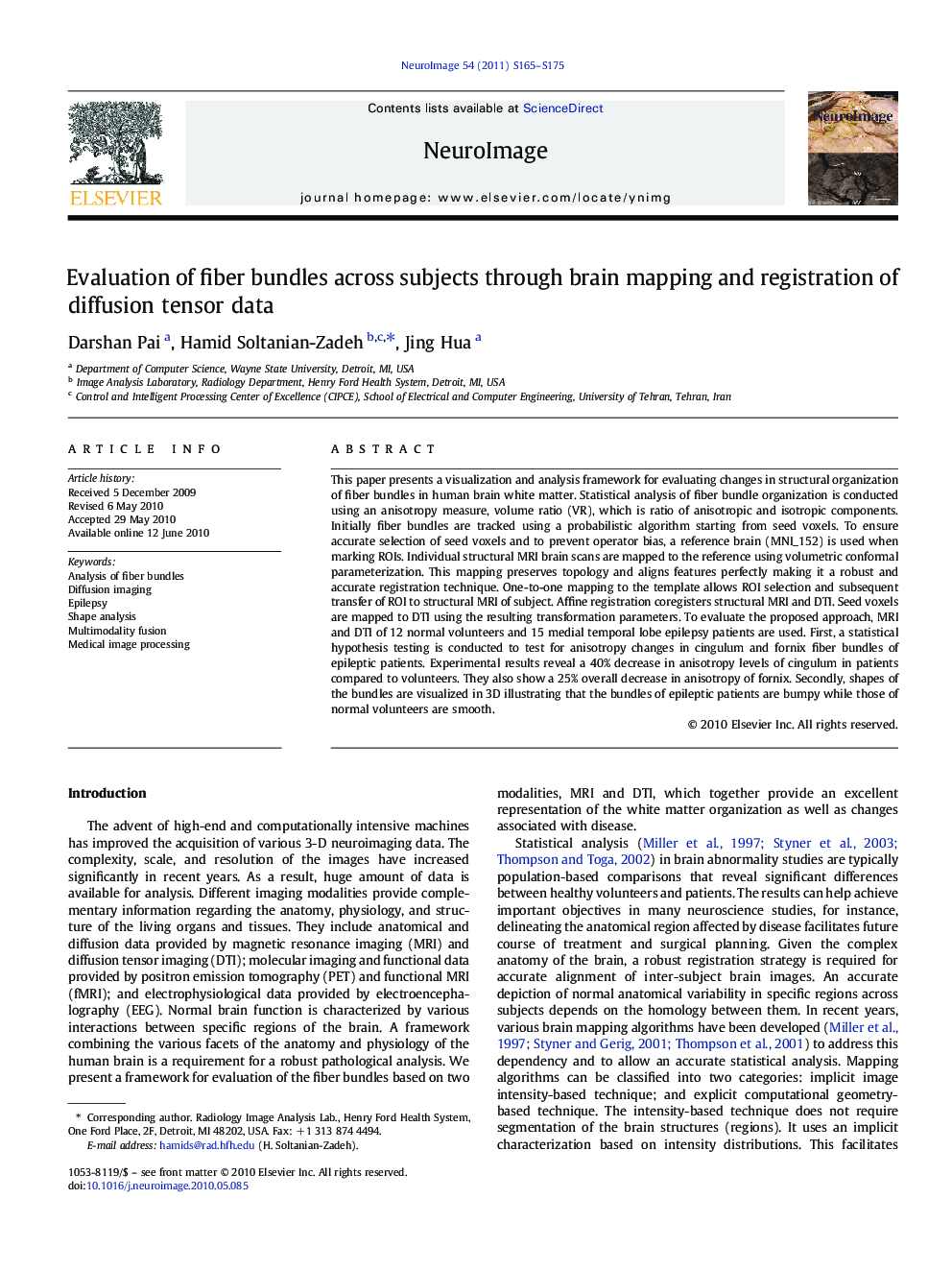| Article ID | Journal | Published Year | Pages | File Type |
|---|---|---|---|---|
| 3072232 | NeuroImage | 2011 | 11 Pages |
This paper presents a visualization and analysis framework for evaluating changes in structural organization of fiber bundles in human brain white matter. Statistical analysis of fiber bundle organization is conducted using an anisotropy measure, volume ratio (VR), which is ratio of anisotropic and isotropic components. Initially fiber bundles are tracked using a probabilistic algorithm starting from seed voxels. To ensure accurate selection of seed voxels and to prevent operator bias, a reference brain (MNI_152) is used when marking ROIs. Individual structural MRI brain scans are mapped to the reference using volumetric conformal parameterization. This mapping preserves topology and aligns features perfectly making it a robust and accurate registration technique. One-to-one mapping to the template allows ROI selection and subsequent transfer of ROI to structural MRI of subject. Affine registration coregisters structural MRI and DTI. Seed voxels are mapped to DTI using the resulting transformation parameters. To evaluate the proposed approach, MRI and DTI of 12 normal volunteers and 15 medial temporal lobe epilepsy patients are used. First, a statistical hypothesis testing is conducted to test for anisotropy changes in cingulum and fornix fiber bundles of epileptic patients. Experimental results reveal a 40% decrease in anisotropy levels of cingulum in patients compared to volunteers. They also show a 25% overall decrease in anisotropy of fornix. Secondly, shapes of the bundles are visualized in 3D illustrating that the bundles of epileptic patients are bumpy while those of normal volunteers are smooth.
